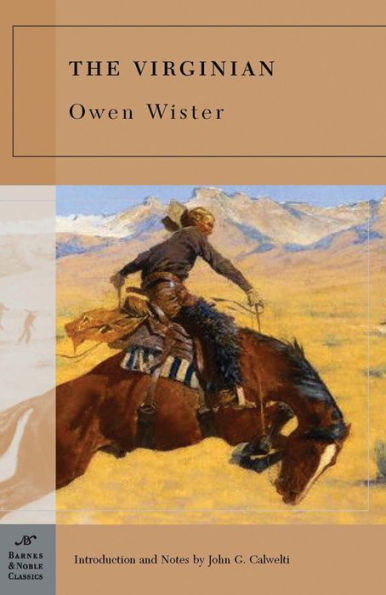Read an Excerpt
From Stefanie E. Sobelle’s Introduction to The Virginian
Wister shared this vision of the West with his friends Theodore Roosevelt and Frederic Remington. Roosevelt created a powerful political rhetoric out of the myth of the West by riding to the presidency of the United States as a reforming Rough Rider. The theme of the hero from the West reforming a corrupted federal government would be echoed in many ways throughout the twentieth century. The artist Remington created a striking visualization of the Wild West (his works would strongly influence the development of the movie western.)
All three—Wister, Remington, and Roosevelt—had originally gone west in hopes of curing various illnesses, illnesses that some scholars think reflected the stresses of the changing social and political positions of their class. In the West, these men found not only improvement in their health, but a new sense of heroic manliness and regenerative power. Like many Americans, they responded positively to what Roosevelt called “the strenuous life.” In addition,Wister and Roosevelt, influenced by the racist ideology of many Americans in the later nineteenth century, believed that the most important American social and political institutions had been created by men of Anglo-Saxon descent. In his popular history of America, The Winning of the West (1889–1896), Roosevelt treated the American settlement of the West as part of the historical movement of Anglo-Saxons toward world domination. Wister shared with Roosevelt the view that Anglo-Saxon manliness found its most intense contemporary expression in the West.
Though he apparently first thought of the cowboy as the last romantic hero, Wister increasingly understood the Virginian’s story as a mythical parable of moral regeneration and the reform of political and social corruption in America. When he rededicated a new edition of the book in 1911 to Theodore Roosevelt (included in this edition), he emphasized Roosevelt’s role as a heroic reformer fighting a corrupted federal government and an increasingly decadent American society. “After nigh half-a-century of shirking and evasion, Americans are beginning to look at themselves and their institutions straight; to perceive that Firecrackers and Orations once a year, and selling your vote or casting it for unknown nobodies, are not enough attention to pay to the Republic.” He went on to suggest that the story of the Virginian was a mythical embodiment of the heroic redemption of American culture. “If this book be anything more than an American story, it is an expression of American faith”.
Many historians, most notably Richard Slotkin and G. Edward White, have showed how conservative Americans in the late nineteenth century were drawn to this vision of the West as a source of moral and political regeneration. But this idea was not solely the property of conservatives. More democratically inclined Americans also believed in the redemptive power of the western experience. In 1893 Chicago held the World’s Columbian Exposition, a great world’s fair celebrating the 400th anniversary of the discovery of America. On the Midway Plaisance, the entertainment area of the fair, Buffalo Bill Cody’s Wild West Show thrilled visitors with daily performances. Nearby, at a congress of scholars held in conjunction with the exposition, the young historian Frederick Jackson Turner delivered his first paper, “The Significance of the Frontier in American History.” In it he argued that the most important values of American culture—individualism, nationalism, and democracy—derived from the simpler society of the frontier and that these values had been continually regenerated by successive frontier experiences. Now that the Bureau of the Census had announced, in 1890, the closing of the frontier, Turner feared the erosion of these democratic values in an increasingly class-dominated and hierarchical America.
Thus, at the end of the nineteenth century both liberals and conservatives projected their concerns about thee social trends of industrialism and urbanization into an idealization of the West that expressed both fascination with the openness and adventure of the Wild West and hope for social and moral regeneration. Wister captures this mood very effectively in The Virginian. His novel deeply influenced the development of the western in literature, drama, and film, with early popular westerns exemplifying similar hopes for regeneration. However, as the twentieth century progressed, bringing with it economic upheavals and global wars, westerns grew darker and less optimistic. Though even in movies of the 1940s, singing cowboys like Gene Autry and Roy Rogers could foil the plots of Nazis and Japanese spies, the vision of more serious creators of the western grew increasingly skeptical about the idea of social and moral regeneration in the Wild West. Historians of the western have clearly traced this progression from The Virginian through the more complex and ironic vision of John Ford to the end of the heroic West in films like Sam Peckinpah’s The Wild Bunch and Ride the High Country.








